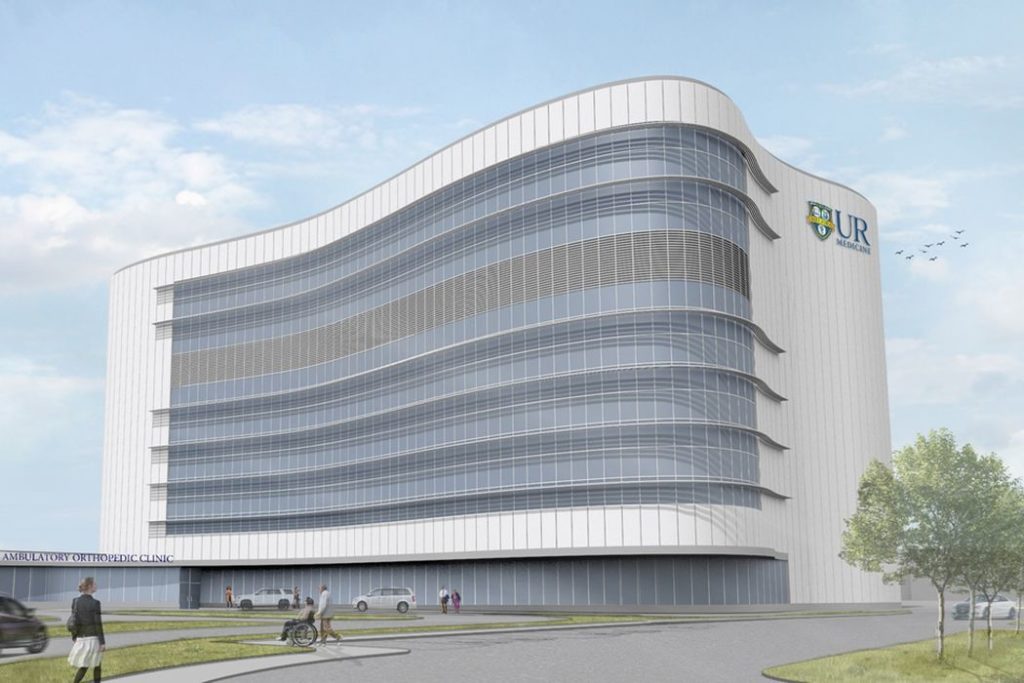
One Medical Primary Care Space in San Diego [Source: New York Times]
Charles R. Goulding and Randall Rothbort look at the influence of retail change on 3D printing.
One of the lasting effects of the pandemic has been retail shopping centers and malls having extensive available spaces throughout the U.S. As these buildings have waited for retailers to return, the medical and dental industries have begun taking this unique opportunity to expand into these spaces and recreating their typical offices and systems to suit the retail facilities.
At the forefront of this is the development of digital offices, which often use technologies such as 3D printing and design software tools. As of 2020, almost 7 out of 10 American adults visit a shopping center medical facility, becoming a more and more common occurrence. As both the medical and dental industries are two of the fastest-growing 3D printing vertical markets, this serves to allow 3D printing to take advantage of this growth.
Various mall spaces throughout the United States are seeing this shift. The Wilmorite Market Place Mall, located in Rochester, New York, has begun the construction of a 350,000-square-foot ambulatory orthopedic facility in collaboration with the University of Rochester. This new facility replaces a lost anchor tenant of the mall (a Sears store that was established in 1982), which has led to a 30% increase in vacancy rate for the mall.
The University of Rochester has made a strong commitment to 3D printing, and with their highly regarded biomedical department, it is likely that the technology will be a major aspect of this new facility, as well as potential new facilities they are part of in the future.

This industry shift can be seen in other facets as well. Most notably, CVS has begun a major transformation from a retail goods retailer into the medical clinic space (which we discussed in our prior article “CVS: Major Business Conversion 3D Printing Opportunities”). CVS, being the 4th largest company in America, and with over 10,000 stores, has begun incorporating various new medical systems into their facilities as they shift to a true medical provider, with 3D printing biomedical equipment on the horizon.
This shows a growing industry shift, as more providers focus on simpler and more effective ways of getting care for their clients, with companies such as CVS having a significant leg up on the competition with their recognition and existing facilities.
What all of these facilities have in common is the expansion of digital medical offices. Digital medical offices use a variety of unique technologies to bring all aspects of patient care in-house. An example is the digital transformation of all Aspen Dental offices to digital offices by 2023.
This includes a transition to using various state-of-the-art equipment, including all-digital labs, design software tools, and 3D printing equipment to create all custom dental pieces that patients require, including dentures, surgical guides, and crowns, all in-house in the office. All of these technologies have been rapidly improving in the space (as discussed in our article: “Advancements of 3D Printing in the Dental Industry”). This reduces time spent waiting for the patient, improves the quality of care, and reduces costs, as all patient products can be produced immediately without the need of a 3rd party. Many other dental and medical companies are joining this transition, pushing the industry to a more efficient future.
The Research & Development Tax Credit
The now permanent Research and Development (R&D) Tax Credit is available for companies and startups developing new or improved products, processes and/or software.
3D printing can help boost a company’s R&D Tax Credits. Wages for technical employees creating, testing, and revising 3D printed prototypes can be included as a percentage of eligible time spent for the R&D Tax Credit. Similarly, when used as a method of improving a process, time spent integrating 3D printing hardware and software counts as an eligible activity. Lastly, when used for modeling and preproduction, the costs of filaments consumed during the development process may also be recovered.
Whether it is used for creating and testing prototypes or for final production, 3D printing is a great indicator that R&D Credit eligible activities are taking place. Companies implementing this technology at any point should consider taking advantage of R&D Tax Credits.
Conclusion
More and more medical, dental, and biomedical companies have begun to seize retail opportunities to expand their footing for potential customers, with the 3D printing industry joining them as part of this transformation.
As they reuse these retail spaces, turning them into a full medical environment, it will enable medical service providers to provide a more accessible and efficient experience for their patients. Additive manufacturing providers will be integral to supplying the technology and resources required to ensure this industry shift is successful.

